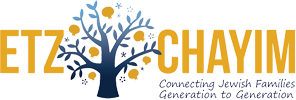Sukkot סוכות
Like our booths, joy is completely portable. Bring it with you.
- author unknown
Festival of Tabernacles
Immediately after Yom Kippur, we are commanded to start building our sukkot [pl of sukkah], little huts or booths, in which we are supposed to 'live' for the coming week starting five days after Yom Kippur on the 15th of Tishrei. Some Jews do this literally, others choose to understand 'live in' as meaning having some meals there, hanging out with friends or sitting there reading a book.
Also called Z’man Simchateinu, the Season of Our Rejoicing, Sukkot is the only Jewish holiday where we are commanded to be joyful. After all, have turned ourselves inside out over Yom Kippur, confessed our sins and asked for forgiveness and now we have the opportunity to celebrate our renewed relationship with one another and with God.
There are two key ritual objects associated with Sukkot: the sukkah and the lulav and errol.
What is a sukkah?
A sukkah is a fragile, impermanent structure has to have at least three walls one of which can be an existing wall, like the side of a house. The walls may be constructed of any material although canvas and wood are the most common. The roof has to be a temporary covering, usually made from loose branches from trees or anything that has grown from the ground like bamboo but it has to have been cut off from the ground. According to tradition, this roof covering, s’chach, should give shade and yet allow those in the sukkah to see the stars through the roof at night.
What is the lulav and etrog?
The lulav is a combination of date palm, aravah [willow] and hadass [myrtle] branches, held together by a woven palm branch. The etrog, or citron, is a lemon-like fruit with a wonderful citrus fragrance. Many explanations have been offered as to the significance of the lulav and etrog, some of which you can find in the link below.
We look forward to seeing you at our sukkah at Etz Chayim over Sukkot.


